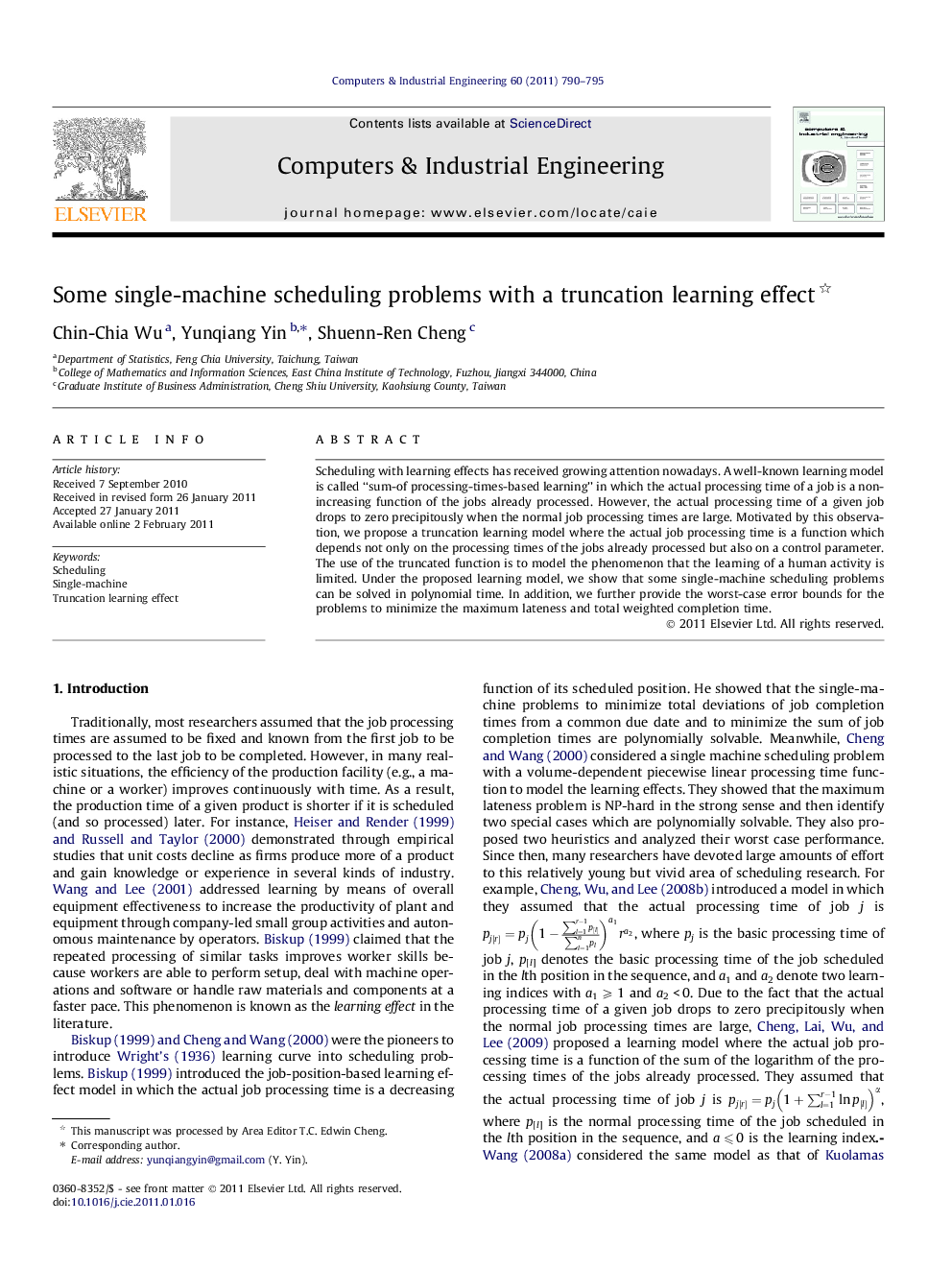| Article ID | Journal | Published Year | Pages | File Type |
|---|---|---|---|---|
| 1134955 | Computers & Industrial Engineering | 2011 | 6 Pages |
Scheduling with learning effects has received growing attention nowadays. A well-known learning model is called “sum-of processing-times-based learning” in which the actual processing time of a job is a non-increasing function of the jobs already processed. However, the actual processing time of a given job drops to zero precipitously when the normal job processing times are large. Motivated by this observation, we propose a truncation learning model where the actual job processing time is a function which depends not only on the processing times of the jobs already processed but also on a control parameter. The use of the truncated function is to model the phenomenon that the learning of a human activity is limited. Under the proposed learning model, we show that some single-machine scheduling problems can be solved in polynomial time. In addition, we further provide the worst-case error bounds for the problems to minimize the maximum lateness and total weighted completion time.
